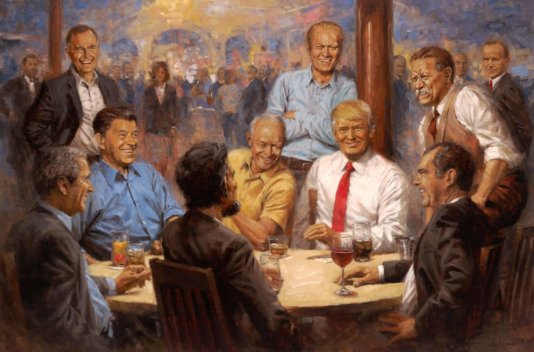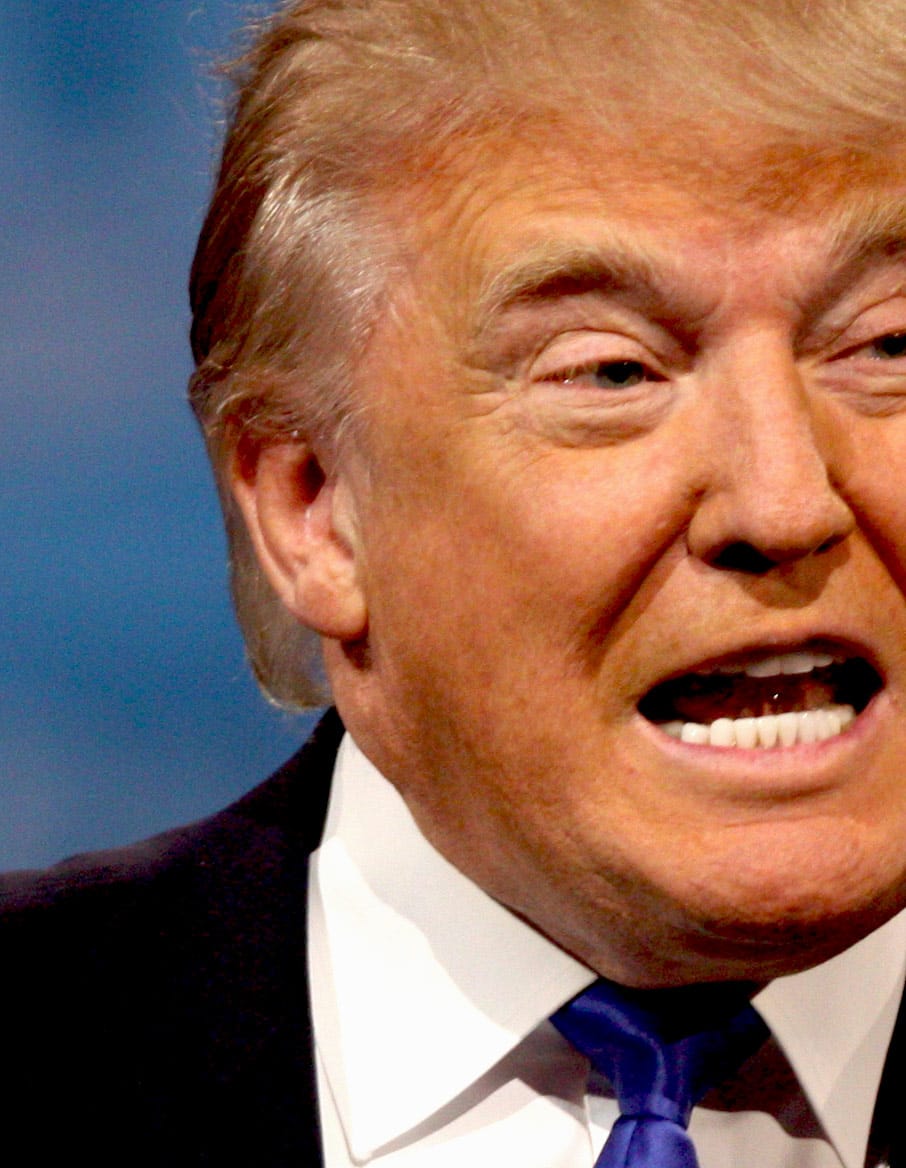- About
- Topics
- Picks
- Audio
- Story
- In-Depth
- Opinion
- News
- Donate
- Signup for our newsletterOur Editors' Best Picks.Send
Read, Debate: Engage.
| November 07, 2018 | |
|---|---|
| topic: | Arts |
| tags: | #Donald Trump, #election, #White House, #USA |
| partner: | Screen Shot |
| located: | USA |
By Louis Shanka
“Trump’s design aesthetic is fascinatingly out of line with America’s past and present,” writes author Peter York. “The best aesthetic descriptor of Trump’s look, I’d argue, is dictator style.”
When he took over the White House, he described the place as “a real dump” while he renovated the premises last year. In the Oval Office, he replaced Childe Hassam’s painting Avenue in the Rain with a portrait of Andrew Jackson, the seventh President. He has also hung pictures of his inauguration—featuring a falsely inflated crowd—and the electoral college map, presumably missing the final vote tally.
Now, thanks to eagle-eyed viewers of 60 Minutes, we know that he has recently hung up a group portrait of past Republican presidents in the West Wing. The print is by Andy Thomas, a self- taught artist who usually paints cowboy and Civil War scenes. Trump received the print as a gift from Congressman Darrell Issa and he subsequently phoned up Thomas to express his delight with the piece. “One thing he specifically mentioned was he didn’t usually like portraits of himself,” he recounted to the New York Times. “But he said that he really liked that one.” Perhaps this is because Trump appears noticeably slimmer than in real life, although this is something Thomas regularly does. “I do that with everyone, even self-portraits—it’s a feel-good painting and I make them as good-looking as I can,” he explained. But here, Trump, with his signature Diet Coke on ice, is also the centre of attention, grinning smugly as the other Presidents laugh—presumably—at his joke. (“How many Mexicans does it take to build a wall?”)
Eisenhower, Lincoln, Reagan, W. Bush, Nixon all sit around the table, with Roosevelt, Ford and H. W. Bush standing around. In the distance, Coolidge and Harding look on, as excluded from this conversation as they are from many people’s memories. “Wait, this is a club of all the past men who served as a Republican United States President!” reads Thomas’ description. “Who could that female be walking directly to the table? One can only guess.” (It’s worth noting Thomas has also produced an equivalent painting of notable Democrat presidents). Of course, this type of group portraiture is far from unusual: donors were often included in Christian altarpieces, painted into grand compositions alongside saints, the Virgin Mary and Christ. And in a more presidential vein, an 1866 print depicts Abraham Lincoln—who was assassinated the previous year—being greeted in heaven by George Washington, thereby aligning the two men in a pre-Mount Rushmore America.
In Trump’s group portrait, the only two living presidents, H.W. and W. Bush, are furthest from the incumbent. Lincoln, the first Republican president, sits opposite Trump, although we can’t see his expression. What might Trump’s fondness of this painting tell us about him? It’s hardly high-brow art (not that Thomas ever claimed it as such). Is he trying to write history by placing himself along with well-known and celebrated former presidents? He once described himself as “your favourite—of all time—president,” so this is hardly a stretch. Or even to rewrite history? Not known as a stickler for the truth, this too seems possible.
Other than the title of Republican, one which Trump has not always worn, I’m not sure there is a single ideology that would actually unite the men sat around this table. The Republican Party of Lincoln is far from that of today: it was, at the time, to the left of the Southern Democratic Party, who defended slavery. Its base was rooted in the Northern states through the Progressive Era and the terms of Warren G. Harding, Calvin Coolidge and Herbert Hoover (not pictured). What would these men make of Trump, his divisionism, his remarks that there were “very fine people on both sides” at a far-right/Antifa march? (Note that Eisenhower was a five-star general who was one of the architects of the Allied invasion of France and Germany.) And while he might seem more at home alongside Reagan and, most of all, Nixon, at least they knew that Russia were the bad guys—and where Russia is.
Perhaps, above all else, this painting represents the absurdity, the sheer surrealism, of our current political situation. How has the Republican Party come to this? Divisive populism and downright lies dominate; with the loss of Senator John McCain earlier this year, the party lost a part of its history and a lot of its soul.
This whole situation—a reality show producer sharing drinks with legendary statesmen—should be impossible, yet here it is, hanging on the wall of the White House.
By copying the embed code below, you agree to adhere to our republishing guidelines.

